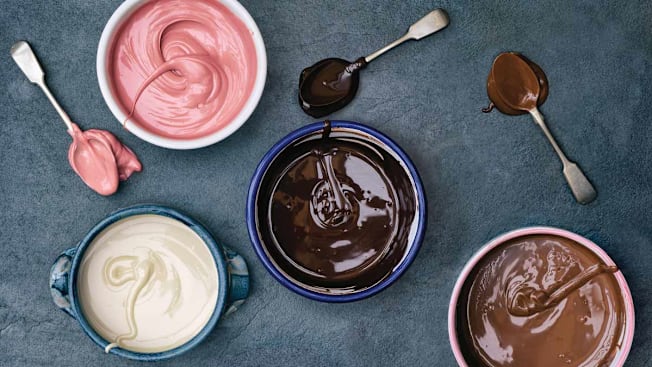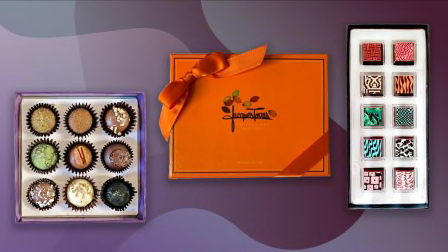A Guide to the Healthiest Chocolate
What's good for you may surprise you

When it comes to treats, you could do worse than chocolate. Studies suggest that it may improve heart, brain, and gut health. But not all chocolate is the same. Follow these helpful tips to get the best balance of indulgence and health benefits.
Choose Dark Over Milk
Chocolate is made from cacao beans, which contain cocoa solids and cocoa butter. The solids have flavanols, antioxidant plant compounds that can reduce inflammation, improve blood flow, and support overall health. Dark chocolate has more solids, and therefore more flavanols, than milk chocolate. (To get a meaningful amount, choose a bar that’s at least 70 percent cocoa.) Harvard researchers recently found that people who ate dark chocolate five or more times a week had a 21 percent lower risk of type 2 diabetes than those who rarely ate it, likely due in part to the flavanols. Dark chocolate can also offer decent amounts of fiber, magnesium, and potassium, while there’s little to none of those nutrients in milk chocolate.
Know the Other Types
Dark chocolate is also better nutritionally than ruby, white, or blonde chocolate. Like milk chocolate, those types are higher in sugars and lower in flavanols. There are flavor differences you might want to consider, though. Ruby is made from a different type of cocoa bean that gives it a naturally pink hue and a fruity, slightly sour flavor. White chocolate is made from cocoa butter and has no cocoa solids. It’s creamy and sweet with hints of vanilla. Blonde is a type of white chocolate that has been cooked to caramelize the sugars, giving it a deeper flavor.
Boost the Benefits
No matter which type of chocolate you prefer, you can fit it into a healthy diet if you keep portions small, about an ounce. To improve the nutritional quality of your treat, eat it with foods that contain antioxidants, fiber, and healthy fats. Chocolate pairs well with fresh and dried fruit, nuts, and even some whole grains. Try having a handful of dried fruit and nuts alongside your chocolate of choice. Chocolate-covered nuts (especially dark) are a great option. You can also chop chocolate and stir it into yogurt or fold it into nut butter to use as a spread on toast or fruit like bananas or apples. Or use melted chocolate to perk up popcorn, oatmeal, or a bowl of fresh or frozen fruit.
Editor’s Note: This article also appeared in the March 2025 issue of Consumer Reports On Health.




















